TV
Everything We Learned About HBO Max’s ‘It: Welcome to Derry’ at NYCC 2025
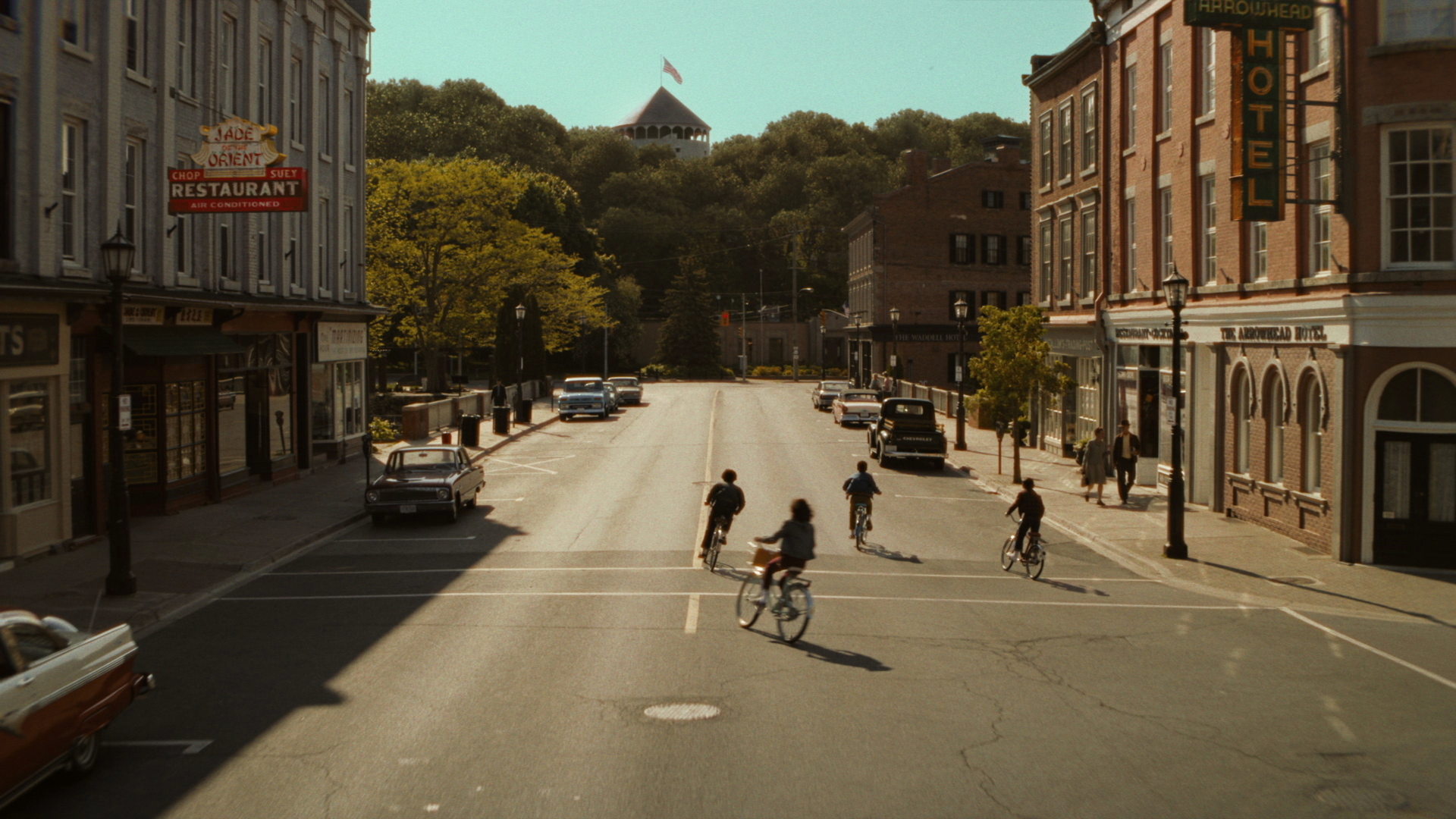
Do you know what time it is? It’s time to float, baby—because Stephen King’s It is returning to our screens! Developed by Andy Muschietti, Barbara Muschietti, and Jason Fuchs, the latter of whom also serves as co-showrunner alongside Brad Caleb Kane, It: Welcome to Derry is a prequel series to 2017’s It and 2019’s It Chapter Two and is set in 1962, 27 years before the events of the first film. Pennywise (played once again by Bill Skarsgård) is back for another child-eating cycle, so you’d better stay out of the sewers, even if you see a shiny red balloon down there.
Ahead of the series’ HBO and HBO Max premiere on October 26, the cast and creatives behind It: Welcome to Derry took to the Empire Stage at New York Comic Con to tease the horrors in store. If you couldn’t make it, never fear (well, maybe fear a little—you taste so much better when you’re afraid) because we’ve rounded up the highlights right here.
It: Welcome to Derry Is Based on Mike Hanlon’s Interludes from Stephen King’s Original Novel
If you’re a Constant Reader of Stephen King, you might remember that the 1986 novel It includes a series of five first-person “interludes” documented by Mike Hanlon (played in the films by Chosen Jacobs and Isaiah Mustafa), Derry’s town librarian and unofficial historian. These serve to flesh out the sinister world of Derry, which is a character in and of itself, and to help the reader appreciate just how far back Pennywise’s dark influence over the town goes. As Andy Muschietti put it during the panel, the interludes are “a puzzle that was intentionally unfinished in the book,” one that sparked an idea in the minds of the series’ creators.
“For me,” he says, “those interludes were kind of a blueprint for a different story, a hidden story, a story that is not told forward but a story that is told backward and has, as a final conclusion, the events in which It became Pennywise.” Why is the story being told backward? You’ll have to see the show to find out.
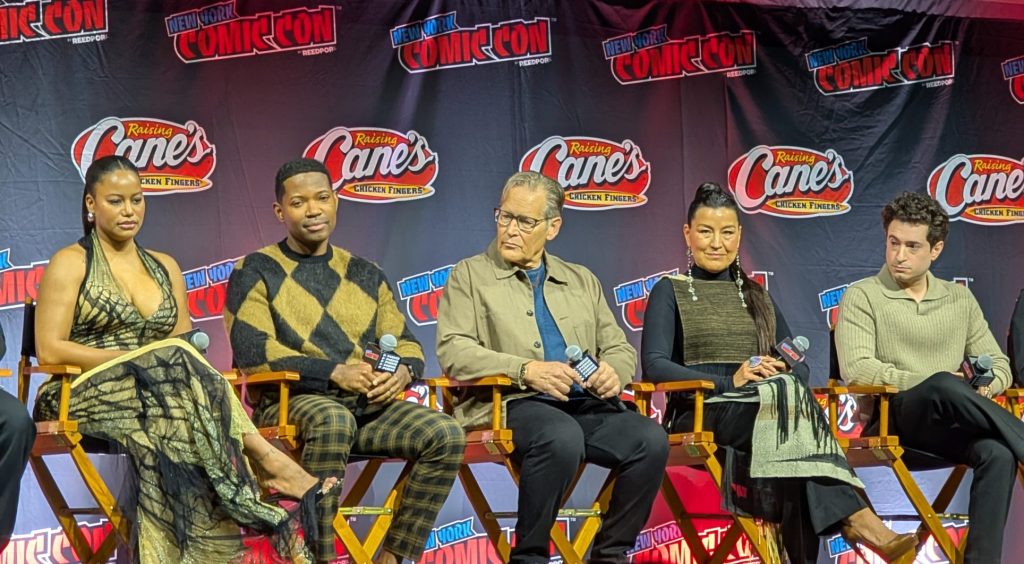
Photo taken by Samantha McLaren.
The Story Centers on Mike Hanlon’s Grandfather and His Family
We caught a glimpse of Leroy Hanlon, Mike Hanlon’s grandfather, in 2017’s It, where he was teaching the young boy how to use a bolt pistol to kill sheep. In It: Welcome to Derry, we’ll meet a young Leroy, played by Jovan Adepo, just as he’s moving to Derry with his wife, Charlotte (Taylour Paige), and their son—right in time for a kid to disappear in town.
Leroy is a “flyboy” in the U.S. Air Force, which was especially meaningful to Adepo, whose own father was a military man. “Getting a chance to play, in some form, a version of who I thought my father was as a child was really exciting for me,” he says.
Adepo notes that Leroy is in search of a better life for his family, which he’s probably not going to find in the clown murder capital of America, and teases that the man has a “very unique relationship with fear.” As for his wife, Paige says that Charlotte “has a sacral sense that something is just not right in Derry.
“It’s frightening to think that you’re losing your mind,” she says. “It’s frightening to feel hysterical, and everyone around you being like ‘oh, we’re good.’”
The 1960s Setting Creates New Opportunities for Anxiety and Fear
Stephen King’s It is split between the late 1950s (for the child portion) and the mid-1980s (for the adult portion). The film adaptations shifted these time periods up to 1989 and 2016, respectively. Since Pennywise’s murderous cycle occurs every 27 years, this means the prequel series is set in 1962, which allowed the creative team to tap into some of the themes and ideas present in King’s 50s setting.
“What we couldn’t do in the movie in terms of era… we’re doing now,” Andy Muschietti explains. “It’s closer in spirit and also in textures and feel to what the book was.”
“I love doing complex, interconnected, very character-rich shows,” says co-showrunner Brad Caleb Kane. “Setting it in 1962… that was very interesting to me, particularly when you’re dealing with a monster, an interdimensional creature, who uses fear and hatred to divide, and you’re talking about 1962 in America. Well, that’s a very rich and specific area to mine.”
This period of intense social anxiety and political instability in America would be nothing short of a buffet for Pennywise, for whom fear is flavoring. As King writes, “adults had their own terrors, and their glands could be tapped, opened so that all the chemicals of fear flooded the body and salted the meat.” In that case, our favorite Dancing Clown might want to monitor Its sodium levels.
“Derry is a microcosm for America,” Kane adds.
Indigenous Characters Will Play a Major Role in It: Welcome to Derry
It Chapter Two caught some heat in 2019 for its inauthentic inclusion of Native American spiritualism as a plot device. It: Welcome to Derry seems to be making strides to correct that mistake through the character of Rose, played in the series by Kimberly Guerrero. (That’s the same Rose, by the way, who owns Second Hand Rose, the pawn shop glimpsed in It Chapter Two and staffed by King himself in a cameo appearance.)
“The Stephen King universe is a family, but it’s a family that we’ve been left out of,” Guerrero says. “The native story has been there, but we were never able to join you all at the table. We have stories, too—and boy, what a story!”
Guerrero notes that the story of Derry, where something evil lurks in the sewers just out of sight, is one that will feel familiar to Indigenous audiences, saying, “I have never been to a reservation or a Native American community that did not have a place where you do not go. You do not go because you do not know.” But Rose does know, and she’s doing her darndest to protect against It. Her greatest fear is something happening on her watch.
“It was such a gift to get to play this Indigenous character that has had all this ancestral knowledge that’s been passed down from generation to generation to generation,” Guerrero enthuses. “Rose knows—my community in this story knows—everything that happened before Derry was Derry. There was a first Loser’s Club, and that Loser’s Club was a group of Indigenous kids.”

Photo taken by Samantha McLaren.
James Remar Was Thinking about Retirement before Getting the Call
Rose’s story in It: Welcome to Derry is closely connected to that of General Francis Shaw, played by James Remar. The actor, who recently reprised the role of Harry Morgan in Dexter: Resurrection, says he was considering retirement when the opportunity to join the Stephen King universe fell into his lap.
“I was in the parking lot of a Pavilions grocery store and I was thinking to myself, well, it doesn’t really matter if I don’t work anymore,” Remar recalls. “I got into the car and I got a phone call from my agent, and they said ‘Andy and Barbara Muschietti want to meet you for this undisclosed project, and they’re only meeting one actor.”
“I admired this man since I was a child,” Andy Muschietti explains. “When he said yes, I couldn’t believe it.”
Remar, who brought his own experiences growing up in the 1960s to the table, says his character was saved from Pennywise by Rose when they were kids. They fell in love and had a whirlwind romance as only 9-year-olds who have been terrorized by an ancient evil entity can, though Shaw’s psyche was “shattered” by his encounter with It. Now in charge of strategic air command for the northeastern United States, General Shaw returns to Derry on assignment and reunites with his old flame just as the cycle begins again.
“I feel that my character is drawn back to Derry,” Remar says. “It’s out of my control… I’ve forgotten it in large part, but it’s in the fabric of my being, and I go to Rose.”
We’ll See a Different Side of the Shining’s Dick Hallorann
Audiences will meet plenty of new characters in It: Welcome to Derry. But one character who is likely very familiar to Stephen King fans is Dick Hallorann, the man who would go on to become head chef at the Overlook Hotel and who would use his “shine” to help save Danny Torrance from the terrifying forces lurking within its halls. Hallorann is a central character in The Shining (played by Scatman Crothers in Stanley Kubrick’s film adaptation, and by Melvin Van Peebles in Mick Garris’ 1977 miniseries) and a tertiary one in Doctor Sleep (portrayed by Carl Lumbly in Mike Flannagan’s adaptation). However, Constant Readers will know that Hallorann also has ties to Derry, where he founded The Black Spot bar, the site of a racially-motivated attack. According to Chris Chalk, the actor bringing this iconic character back to the screen in It: Welcome to Derry, the version of Hallorann we meet in the series is quite different to the older, gentler version we know and love.
“Dick is in Derry because Dick fucked up,” says Chalk. “Dick thinks all of these people are corny, he doesn’t respect a single one of them, and that’s the journey of Dick. The Dick you know is super nice. Good luck with this Dick!”
In an exclusive clip played for the NYCC audience, Hallorann—who was a mess cook in the military during his younger years—has a terrifying vision of Pennywise while flying high overhead in a U.S. Air Force plane, seeing the ruin’s of Bob Gray’s circus wagon and dead children suspended in the air in the sewer.
“You’re going to meet him at a stage where he has a different relationship with his internal self, with his spiritual world,” Chalk adds of Hallorann, “and his biggest fear is himself and losing control.”
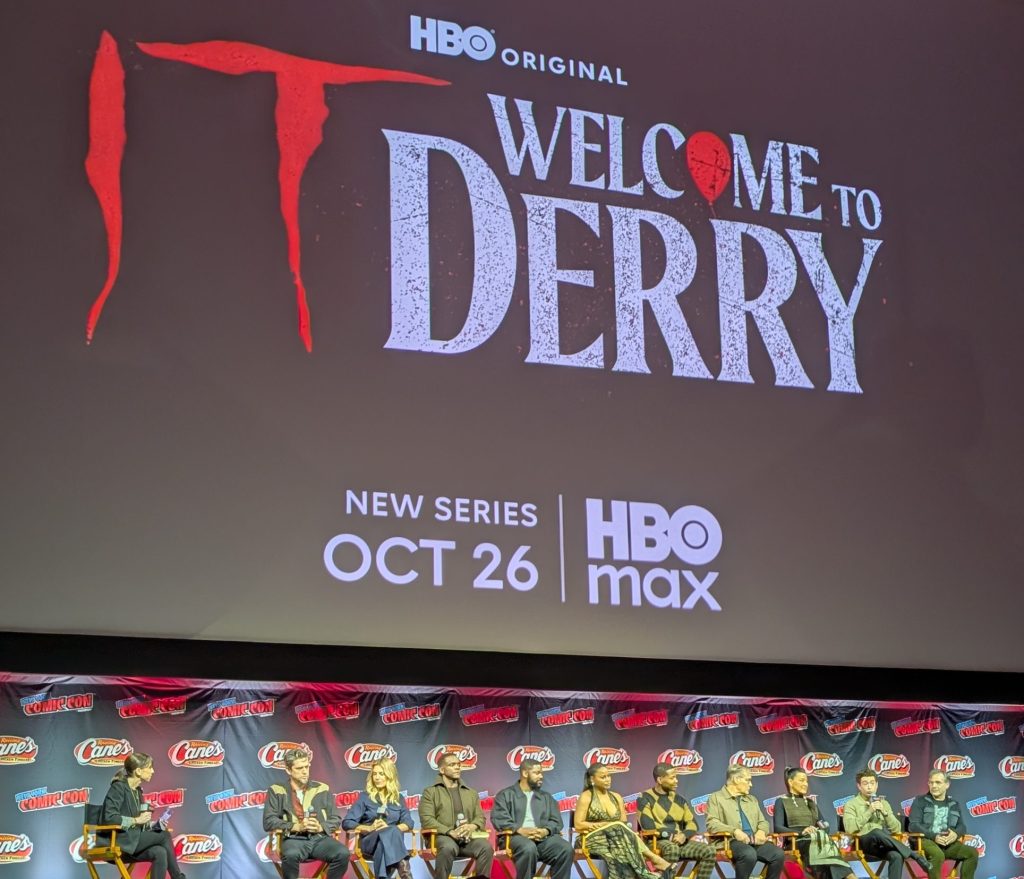
Photo taken by Samantha McLaren.
Pennywise Is Here, but You Won’t See the Iconic Clown Right Away
We’ve been dancing around the Dancing Clown a lot in this article without looking directly at It. Don’t worry, Pennywise stans, It’s definitely part of the series—but you might not see It in Its clown form right away.
“He’s our shark,” says Barbara Muschietti, referencing Jaws’ tactic of teasing viewers with sightings before a sudden and shocking reveal. “We believe wholeheartedly that we can’t allow the audience to get comfortable with It. We had to hide the ball.”
“Part of the unpredictability is, ‘When is the clown going to show up?’” adds Andy Muschietti. “I can’t tell you when! But he will… He’s present in other incarnations for a while and then, when you least expect it, there he is.”
It: Welcome to Derry will premiere on HBO and HBO Max October 26th, 2025.
TV
The Scariest Episode from Every Season of ‘The X-FILES’

It’s impossible to overstate the influence of The X-Files. Horror fans can spot its cultural ripple effects everywhere from Buffy to The Conjuring to Sinners. The show traversed countless subgenres and tonalities, including queasy body horror, B-movie monster yarn, and even frothy romantic comedy. For the uninitiated, wading into the paranormal investigations of Agents Scully and Mulder can feel like braving a haunted house with nothing but a flashlight. Fear not – if you’re in the mood for some Halloween-season thrills, we’ve chosen the scariest episode from each of the show’s nine original seasons.
The Scariest Episode From Every Season of The X-Files
Season 1: “Beyond the Sea” (Jan 7, 1994)
Owing much to The Silence of the Lambs, “Beyond the Sea” drums up genuine psychological scares by drawing the viewer into Scully’s precarious headspace. Her staunch rationalism falters when she encounters an unsettling vision of her dead father, setting the stage for a dizzying mind game between her and serial killer Luther Lee Boggs, portrayed with demented gravitas by Brad Dourif, a genre icon at the peak of his powers here. Thanks to a devastating performance from Gillian Anderson, this early episode broke the doors open on Scully, proving the show was as much about her journey through the unknown as it was her partner’s.
Season 2: “The Host” (Sep 23, 1994)
The show’s makeup effects team brought a cavalcade of nightmare visions to life throughout the franchise’s run, but none more stomach-turning than the Flukeman from this Season Two creature feature. Mulder investigates dead bodies in the New Jersey sewer system. The culprit? A parasitic flatworm with the size and physiology of a human. With Anderson’s pregnancy limiting her screen time, the episode has plenty of breathing room to linger on the gnarly attacks and dead-eyed visage of the Flukeman (played by Darin Morgan, who’d later pen some of the show’s most vaunted episodes). Not only does “The Host” feel like Creature from the Black Lagoon with an extra veneer of ick, the connection of Flukeman’s origins to the Chernobyl disaster adds a chilling layer of human culpability. “Nature didn’t make this thing,” Mulder intones. “We did.”
Season 3: “Wetwired” (May 10, 1996)
“Wetwired” tackled screen addiction over a decade before smartphones crawled into our hands and changed our brains forever. Paranoid vibes dominate this episode, in which binge marathons of cable news and game shows drive ordinary citizens to homicide. Scully soon gets pulled asunder by the nefarious broadcasts, causing her to turn against Mulder. “Wetwired” blends the show’s case-of-the-week format with its ongoing conspiracy saga to produce a high-anxiety thriller that presages our modern miasma of doomscrolling, fake news, and AI-induced psychosis. Along with the show’s other tales of techno dystopia (“Blood,” “Kill Switch”), consider “Wetwired” a proto-Black Mirror – with the added tension of composer Mark Snow’s slithering synth score that creeps under your skin.
Season 4: “Home” (Oct 11, 1996)
The X-Files cross-pollinated horror with related genres, but “Home” is perhaps the lone installment that feels like pure horror in its most undiluted form. Mulder and Scully investigate a grisly infanticide and run afoul of the Peacocks, a reclusive trio of brothers with unspeakable secrets. The dark power of “Home” pervades every frame. Behold the episode’s gorgeously photographed cold open, gruesome kills, and shiver-inducing reveals, all in service of the writers’ twisted treatise on family. “Home” was birthed at the top of Season Four, when the show found itself on a meteoric cultural ascent. The show’s growing popularity may explain why writers Glen Morgan and James Wong felt bold enough to send The X-Files into unhinged Texas Chainsaw Massacre territory. They may have overplayed their hand: this episode was famously banned from reruns after its initial airing.
Season 5: “Chinga” (Feb 08, 1998)
As the show’s profile continued to rise, the inevitable occurred: horror titan Stephen King reported for writing duty. The result is a sharp Gothic chiller with squirm-inducing set pieces. While on vacation, Scully happens upon murder and mayhem in (of course) Maine. While the local citizens are quick to blame Melissa, a single mom to a young girl named Polly, Scully hones in on the true source of evil: Polly’s doll, which can push victims to graphic acts of self-harm. Melissa’s eerie premonitions of death round out the incredible visuals of this episode, also notable for sending Scully on a solo adventure and nudging her yet another step closer toward acceptance of monsters and madness.
Season 6: “Drive” (Nov 15, 1998)
As production moved from Vancouver to sun-dappled Los Angeles in Season Six, the scripts themselves also veered toward sunnier stories, reflecting the writers’ continued hope to replicate the success of comedy installments like “Clyde Bruckman’s Final Repose” or “Bad Blood.” Nevertheless, this season still offered more intense fare like “Drive,” a pulse-pounder about a Nevada man whose head will explode unless he drives westward – and fast. The episode owes much to the quick wit of Vince Gilligan, one of the show’s most seminal writers. Gilligan would go on to create Breaking Bad, starring Bryan Cranston, whom he cast based on the strength of his guest turn in “Drive” as the afflicted man who takes Mulder hostage on his westward race against time. All the earmarks of Breaking Bad are here: can’t-look-away tension, character-driven thrills, and mordant humor belying a pervasive air of rage and doom.
Season 7: “Millennium” (Nov 28, 1999)
Season Seven also ran heavy on lighthearted oddities, but it did offer darker outings on occasion, especially when Carter leveraged The X-Files to tie up loose threads from his prematurely cancelled Millennium. Mulder and Scully call upon that show’s tortured hero, Frank Black (the wry and lugubrious Lance Henriksen), to help them thwart a small cult of FBI agents hellbent on bringing about the apocalypse by turning themselves into zombies. (Hey, it makes sense when you watch it – mostly!) The undead are depicted with moody flair, keeping goofiness to a minimum, and the satisfying climax offers us a glimpse of a monster-fighting trio that could have been. Meanwhile, for fans who are adamant anti-shippers of Mulder and Scully, this episode is the season’s scariest for an entirely different reason.
Season 8: “Roadrunners” (Nov 26, 2000)
With David Duchovny absent from half of Season Eight. Terminator 2’s Robert Patrick was introduced as Scully’s new partner, the stoic and steely-eyed John Doggett, and Scully became the unequivocal narrative center of The X-Files. The writers returned to the show’s darker roots as a way to level-set against the seismic changes. “Roadrunners” is the most stellar beneficiary of these shifts in cast and tone. Unable to fully warm to her new partner, Scully ventures alone into a secluded village to investigate the whereabouts of a missing tourist and realizes something is ever so off about the townspeople. The episode features the mounting social/psychological dread of The Wicker Man, coupled with the disgusting body horror of Alien, and Anderson discovers new shades of grief and resilience in Scully during this flawed yet compelling post-Mulder era.
Season 9: “Daemonicus” (Dec 2, 2001)
With Duchovny fully departed from the cast, the final season of the show’s original run saw Doggett paired with a new partner Monica Reyes (the effervescent Annabeth Gish), with Scully downgraded to a mere consultant for her X-Files comrades. Meanwhile, the writers continued to favor grislier stories such as “Daemonicus,” about a mental patient who may be wielding demonic forces against our trio of heroes. Director Frank Spotnitz goes heavy on the stylistic portents of doom to great effect, employing shots of roiling clouds and sound design laden with eerie whispers to conjure a world besieged by inescapable evil. Even the editing team gets in on the fun, offering up unusual scene transitions to underscore the episode’s mysterious boardgame motif. The episode’s true horror highlight: a projectile vomit scene that lasts for forty-some-odd seconds. Somewhere William Friedkin is saying, “That’ll do, effects team. That’ll do.”
TV
‘Hell Motel’ Season Finale Explained
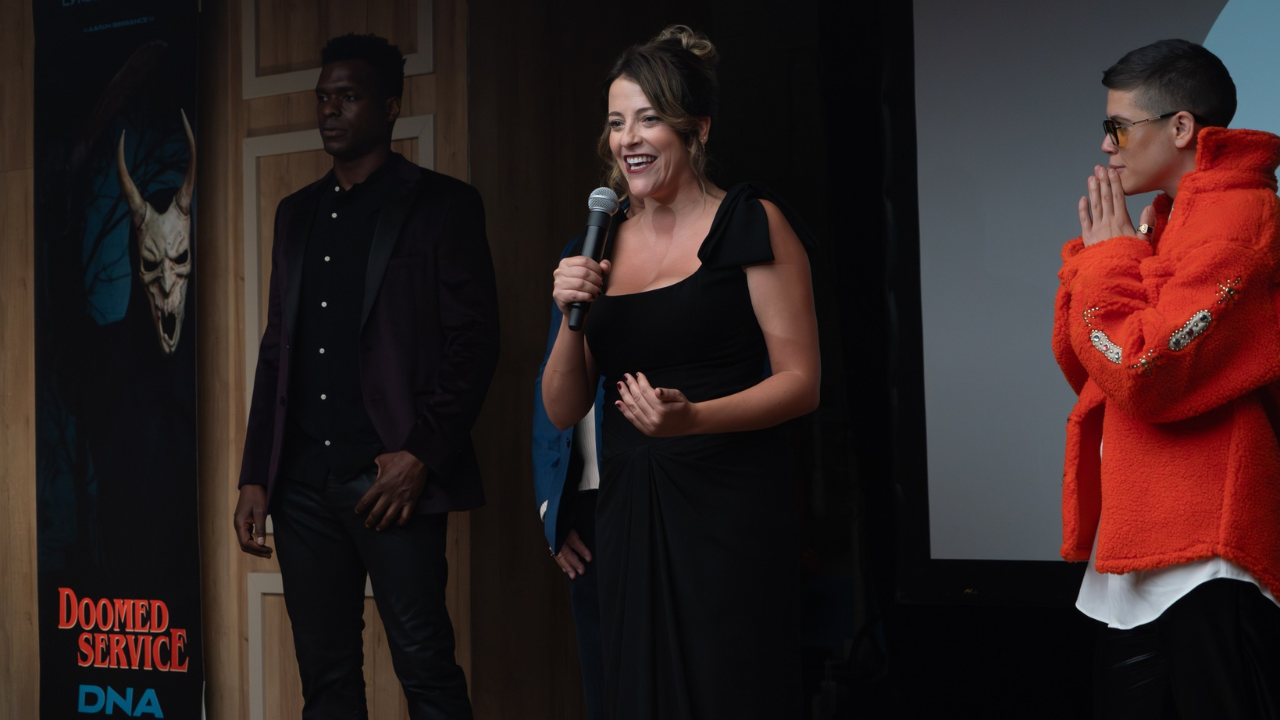
We had a damn great time during our stay at Hell Motel this summer. However, they recently asked us to check out when the season finale dropped. The episode, ‘Grand Guignol,’ delivered a few more shocking surprises. It also packed quite a few meta moments and easter eggs for Slasher fans who followed this crew to the Cold River Motel. With so much going on, many people are still confused about whether Paige (Paula Brancati) or Andy (Jim Watson) was our bonus Baphomet.
As Horror Press’ resident Hell Motel Lady, and nerd with too much time on her hands, I’m here to break down the season finale. If you’ve seen it, continue reading to learn how I reached my conclusion. If you haven’t seen the finale yet, then save this for later because I’m packing spoilers.
The ‘Grand Guignol’ Recap
The episode, written by Hell Motel co-creators Ian Carpenter and Aaron Martin, spends a lot of time playing with the audience. Right up until the very end, they allow viewers the chance to doubt themselves. They also gift us various lines that could mean a couple of different things. The season finale catches up with Paige and Andy after the events of the most recent Cold River Motel massacre. As the only two survivors, they both have some shared trauma, but have drifted apart.
Paige has found herself back in the Doomed Service franchise playing Caitlyn Ridgeley (Lauren Lee Smith) again. This time, she’s leading a new requel that will kickstart a trilogy. To make things even better, her director, Aaron Berrance (Breton Lalama), seems receptive to her having more input in the films. Meanwhile, Andy is teaching at a college where the students don’t want his lectures on comedy. They want him to talk about horror and how he survived a fairly recent murder spree.
After a particularly grueling day of students trying our suspect, er, professor, he heads over to Paige’s place for dinner. She is finally returning a text he sent while she was filming. She wants to make him a meal and invite him to a special early screening of the newest Doomed Service movie. We also get a peek at Paige’s gorgeous apartment filled with Doomed Service merch. This sheds light on just how much this franchise means to her and forces the audience to wonder what lengths she would have gone to for a chance to return to the franchise.
No One Gets Out of this Season Alive
This also strikes Andy as odd. He finally brings up that he found Portia’s heart in Paige’s ceiling at the motel. Paige pins that on Floyd (Gray Powell) and Shirley (Yanna McIntosh) and asks why Andy didn’t take his suspicions about the heart in her room to the police. He claims he didn’t know what to think but knew he had to protect her. Obviously, the heart business and wine results in them moving the conversation to the bedroom. Afterwards, Andy asks Paige about this new Doomed Service entry and admits he has seen all of the movies. Paige tells him that this one gives Caitlyn a daughter, and Andy points out that the real Caitlyn didn’t have a daughter. This is when my wig was snatched, and I realized Andy was the third killer the whole time. However, the writers were not done toying with us yet.
Andy and Paige go on this date to Doomed Service, and clearly, things get stabby. After Paige is humiliated by finding out they killed her character off after she told the crowd she would be around for a trilogy, all hell breaks loose. The audience is confused by Caitlyn’s crime scene photos, which interrupt their supernatural slasher film inspired by Caitlyn’s murder. Aaron asks where the projection booth is, and Andy gives him directions before allegedly going to find the light switch. So, it’s suspicious he knows his way around the theater, but the lights do not come on. However, Aaron is wearing his guts on the outside after meeting a mysterious figure in a hallway. Coincidence?
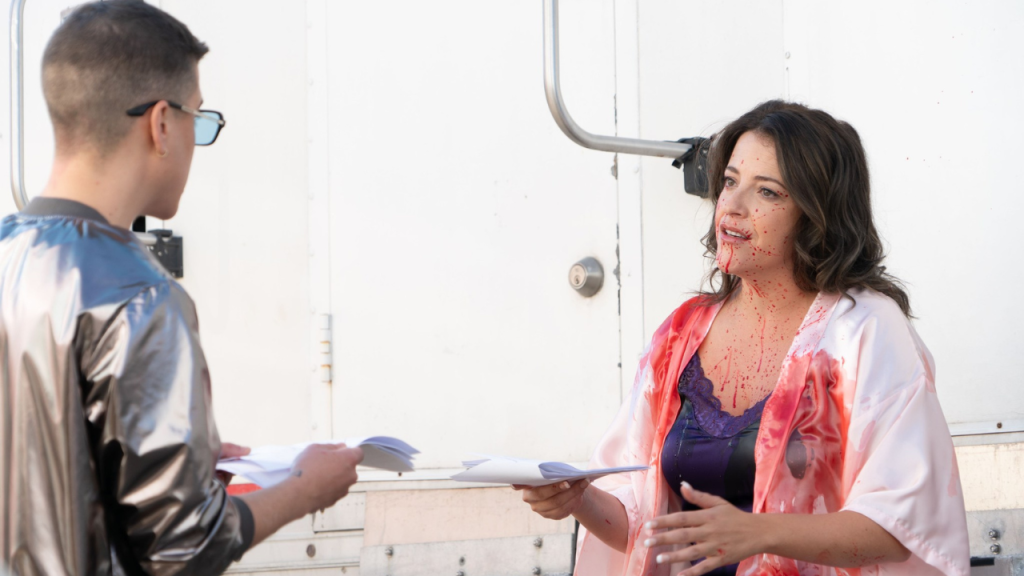
A Bloody Ending
We all have to be looking at Andy differently, but it wouldn’t be as fun if he just owned his shit and confessed. Instead, he tries to blame Paige for killing Aaron and the Hell Motel Squad (trademark pending). This is when Paige starts asking the serious questions, and we find out Andy loved Caitlyn. Andy tells her what a great woman the real Caitlyn was and shares his thoughts on the reductive character Paige has turned her into. Things get heated, and Andy moves too quickly toward Paige, so she instinctively runs him through with the weapon Aaron pulled out of his guts and left nearby. As Andy bleeds out, Paige apologizes for her part in the films and tells him she never considered how people who knew Caitlyn might feel about them.
It seems like Andy is accepting her apology as he dies on the floor. However, the police kick in, and he starts screaming that Paige is trying to kill him. In the confusion, Paige stands up with the machete and asks him to tell the truth. The cops shoot her in her glorious eveningwear, and she falls down next to Andy. His spiteful ass thought he would have the last word, but Paige tells him she will see him in hell. This is when the Hell Motel season finale really earned the episode title, ‘Grand Guignol’.
A Professor and a Killer
Andy was the extra Bathomet running around this season of Hell Motel. The revelation that Caitlyn is his mother explains Andy’s views on the genre and his reactions to certain conversations this season. This development sheds a new light on his instant bond with Paige. It also explains why he felt he had to protect her instead of telling people she had a heart in her ceiling when they were rescued in the previous episode. He didn’t allow her to live just because she seemingly felt bad for her role in sensationalizing a murder. He spared her because she’s a mother figure of sorts.
I’m not going to walk us through Psych 101, but Andy becoming a murderer makes too much sense. Andy’s motives for this killing spree add so many layers to everything he said and did this season. All of his scenes carry more weight because we assumed we knew Andy’s intentions. However, we never even scratched the surface.
One example is when Aaron is telling Paige that she’s no longer valuable to the Doomed Service franchise. Andy is not just feeling bad for his co-survivor and possible new girlfriend. He is also hearing that his murdered mother is no longer relevant to these movies that have been profiting from his pain for most of his life. Knowing the real reason he is pissed at this moment made me recall the times Andy froze when looking at Floyd as Baphomet. Our little murderous professor was facing his mother’s murderer, and that was making things a bit too real. So, he was being put through a lot this season while trying to take a stab at the genre he has beef with.
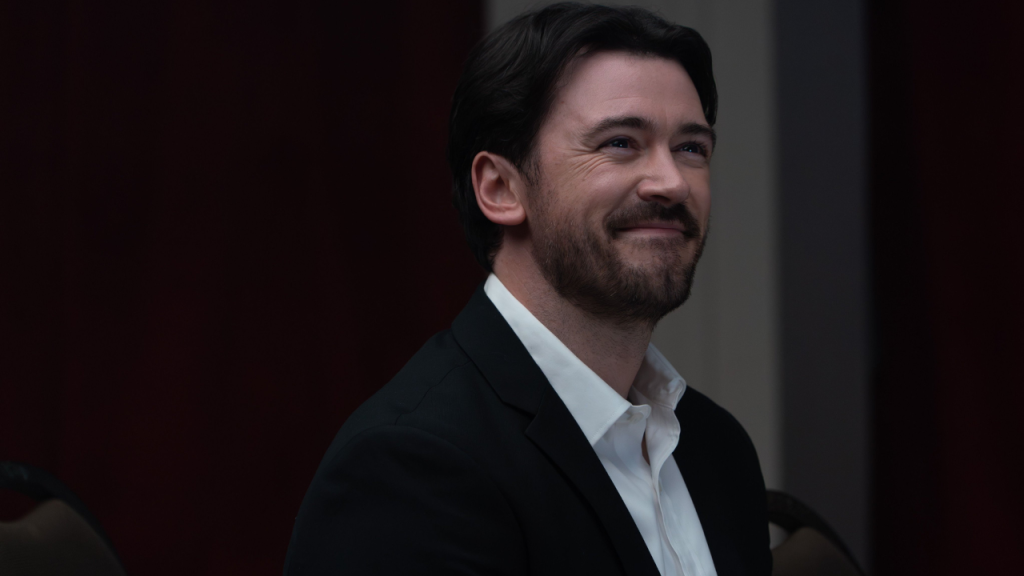
Why Andy Being the Killer Works
There was one point of view that Hell Motel was missing this entire season. In a season that holds a mirror up to true crime media, creators, and connoisseurs, it felt odd not to hear from a victim’s loved ones. I thought Paige was Caitlyn’s daughter, but that would have taken away from her arc dovetailing with Caitlyn’s story. So, having Andy be the son of the victim is a very smooth fix. After all, he grew up watching his trauma become profitable as his mom’s humanity was forgotten.
Andy being the murderer, not only snags a Psycho nod, but it also gives us insight into how this killer was made. It’s not fun being constantly reminded of a loved one’s murder. More importantly, watching the media spin your pain for clicks and headlines triggers a special kind of rage. Hell Motel would have felt incomplete (for tons of reasons) without Caitlyn’s angry offspring.
To add another insult to all of the strays Andy caught this season, his mother’s killers were never caught. People harassed his dad into an early grave (to be fair, it is usually the husband). However, it became a cold case, leaving Andy without anyone to direct his grief and rage at. At least until he came face to face with the murderers and watched Paige deal with them in the previous episode, ‘Cat and Mouse’. He might have started his Hell Motel journey as a simple mission killing spree. However, our sweater king was also thrown a couple of surprises.
The Last Page on Paige
Most viewers blamed Paige all season (and I am guilty of that too). That would have put too much on our final girl’s plate though. She was here as a commentary on how the industry treats women of a certain age. Andy’s confusing Mom Goggles, and her weird attachment to this character aside, Paige’s ending dovetails beautifully with Caitlyn’s. When Aaron tells Paige that they used her to bring the old fans back to the franchise. The reasoning is that they have a new young actor, Paula Lynde (Raíssa Souto). She will keep the old audience and pull in a younger crowd. Aaron is saying the tragedy that started it all, and the woman who played the infamous victim, are no longer relevant. While she might be “too hot to die,” she’s not too hot to be shoved out to pasture for a new model.
The actor (and the victim that her character was inspired by) are no longer trendy. There are so many fun threads to pull at this season of Hell Motel. However, this idea of what we as a society make popular and how quickly we discard it is what stands out to me. Not all true crime podcasters, authors, fans, etc. are ghouls. Yet, the genre does seem to be built on sensationalizing horrific events. So, it’s not lost on me that the final scene of the episode is an actor auditioning to play Paige in a movie about this bloody night.
Is This About Us?
This season holds a mirror up to all of us, including horror fans who like to pretend some of our favorite films do not have real-world ties. It’s asking us to sit with that for a moment and think about how we got here as a species. Sure, it is easy to get lost in the snowblowed frat boys and skinless cooks at this murder buffet. However, the show is also an examination of our own relationship to the media we consume. After all, it is easy to become desensitized after living such unprecedented lives.
Hell Motel gave us plenty to chew on (even though Eric McCormack’s Chef Hemingway died before breakfast). I’m thinking about the lifespan of a trend in this era, where none of us can focus on anything for longer than a few seconds. What becomes of the surviving family members when the rest of the world decides they are ready to close the book on their life-changing tragedy? When the memes die down, and the media thinks their stories no longer bleed enough to lead anymore, what then? I don’t know what to do with all these thoughts yet. However, each of us might want to unpack these ideas as we consume so much information via social media.
That’s All I Know About That
I do not have answers to the questions the season poses. I don’t have an eloquent statement to end this article with or a list of actionable items. What I do know is that Andy was literally cutting up at the Cold River Motel, and that Paige got to be a real final girl for a few moments. I also know I had a damn good time being Horror Press’ Hell Motel Lady this season. Fingers crossed I get to whip that self-made title out again soon!
































